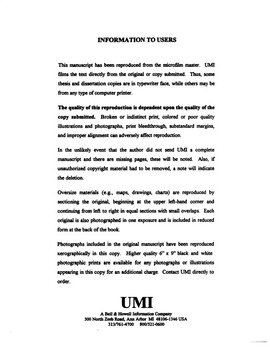| dc.contributor.advisor | Newman, Jody, | en_US |
| dc.contributor.author | Kerr, Sharon Lamoyne. | en_US |
| dc.date.accessioned | 2013-08-16T12:30:07Z | |
| dc.date.available | 2013-08-16T12:30:07Z | |
| dc.date.issued | 1998 | en_US |
| dc.identifier.uri | https://hdl.handle.net/11244/5672 | |
| dc.description.abstract | One hundred and sixty-seven female inmates participated in an investigation of violent crime correlates. The relative lack of empirical evidence about female violent offending compared to that for males prompted this study. Risk and protective factors associated with violence were identified from the empirical literature then analyzed with stepwise logistic regression as predictors of conviction for violent crime. | en_US |
| dc.description.abstract | Contrary to expectations, intelligence and parental criminality did not significantly contribute to the prediction of a conviction for a violent crime. The significant predictors with a positive association with conviction for a violent crime included intoxication at time of current crime, 21 years old or younger at time of crime, depressive symptoms at time of data collection, and a childhood history of sexual abuse. The significant negative associations with conviction for violent crime included having not been raised by both biological parents, drug addiction, anxiety symptoms at time of data collection, mother's substance abuse, and previous incarcerations. | en_US |
| dc.description.abstract | These results provide additional evidence that contributes to clarifying the similarities and differences in the backgrounds of male and female violent offenders, suggesting that there may be important gender differences in the development of violent behavior, specifically the developmental roles of childhood physical abuse and sexual abuse. In addition, differential effects on risk for violent crime conviction were observed for different kinds of substance abuse by both the participants and by their parents. | en_US |
| dc.description.abstract | Furthermore, four of these predictors met additional statistical criteria, in terms of magnitude of the odds ratio and variance, qualifying each as either a risk or protective factor. The risk factors (odds ratios $\ge$ 2) included intoxication at time of crime and being younger than 21 years at time of crime. The protective factors (odds ratios $\le$.5) included having not been raised by both biological parents and previous incarcerations. | en_US |
| dc.format.extent | vii, 267 leaves ; | en_US |
| dc.subject | Female offenders. | en_US |
| dc.subject | Sociology, Criminology and Penology. | en_US |
| dc.subject | Women's Studies. | en_US |
| dc.title | An exploratory analysis of risk factors for criminal violence by women. | en_US |
| dc.type | Thesis | en_US |
| dc.thesis.degree | Ph.D. | en_US |
| dc.thesis.degreeDiscipline | Department of Educational Psychology | en_US |
| dc.note | Source: Dissertation Abstracts International, Volume: 59-07, Section: A, page: 2727. | en_US |
| dc.note | Adviser: Jody Newman. | en_US |
| ou.identifier | (UMI)AAI9839806 | en_US |
| ou.group | Jeannine Rainbolt College of Education::Department of Educational Psychology | |
